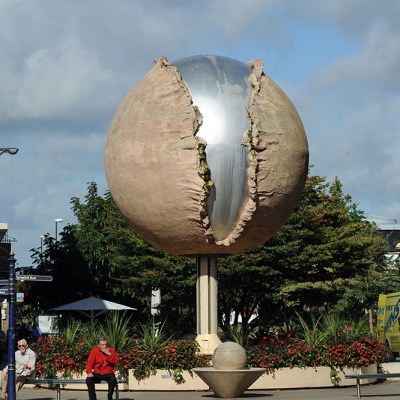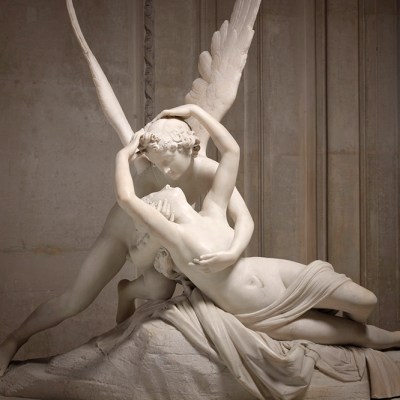 ‘Four things to see this week’ is sponsored by Bloomberg Connects, the free arts and culture app. Bloomberg Connects lets you access museums, galleries and cultural spaces around the world on demand. Download the app here to access digital guides and explore a variety of content.
‘Four things to see this week’ is sponsored by Bloomberg Connects, the free arts and culture app. Bloomberg Connects lets you access museums, galleries and cultural spaces around the world on demand. Download the app here to access digital guides and explore a variety of content.
Each week we bring you four of the most interesting objects from the world’s museums, galleries and art institutions, hand-picked to mark significant moments in the calendar.
In 1501, Michelangelo Buonarroti was commissioned to make a statue of the biblical hero David, intended for the roofline of the duomo in Florence. The resulting marble sculpture measured 17 feet high and weighed over eight tonnes, making it impossible to raise up to the height of the cathedral. Instead, the decision was made to place the sculpture in the square in front of the Palazzo della Signoria, where it was unveiled on 8 September 1504. It remained there as a symbol of Florence’s defiance against rival city-states until 1873, when it was moved into the Galleria dell’Accademia di Firenze for safekeeping. But the loss was keenly felt and, in 1910, an exact replica was returned to the square – ensuring that one of the world’s most famous public sculptures could still be seen by passers-by.
At their best, public sculptures can foster civic pride, aesthetic enjoyment and critical thinking. At their worst, they are white elephants dominating our urban spaces. Either way, they often provoke lively debate and their presence in public spaces sidesteps the barriers of time, cost, elitism and access that prevent many from enjoying art. While in centuries past public sculpture may have been focused on communicating wealth and power, in recent years artists have turned to humour and political activism to make their mark.
Painful Arc II (Shoulder-High) (2023), Baseera Khan. Photo: Timothy Schenck; courtesy the High Line
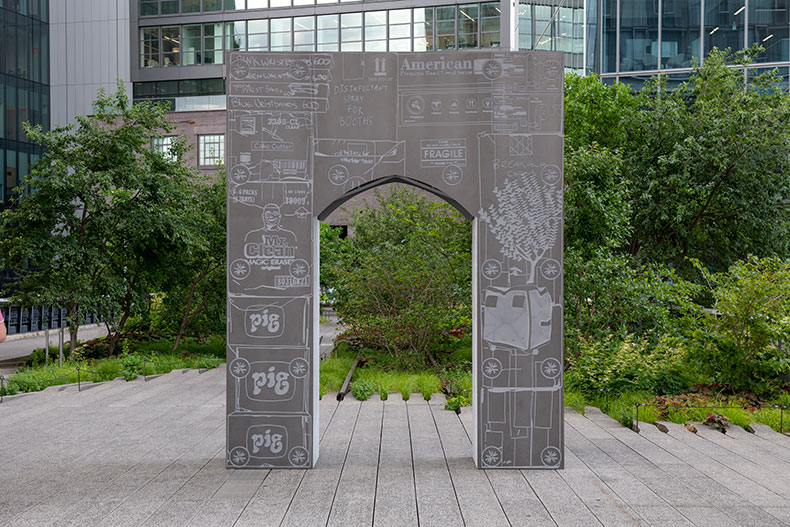
1. Painful Arc II (Shoulder-High) (2023), Baseera Khan
The High Line, New York
This contemporary take on the triumphal arch can be found on New York City’s High Line. The artist Baseera Khan has inscribed smooth recycled granite with drawings of packages, their accompanying labels and handwritten notes, alongside motifs based on punctuation in the Qur’an and the plants that populate the repurposed freight rail line. The aim: to paint ‘a portrait of the park and the people who maintain it’. Click here to find out more on the Bloomberg Connects app.
Installation view of Giant Pool Balls (1977), Claes Oldenburg. Photo: Hubertus Huvermann, 2017
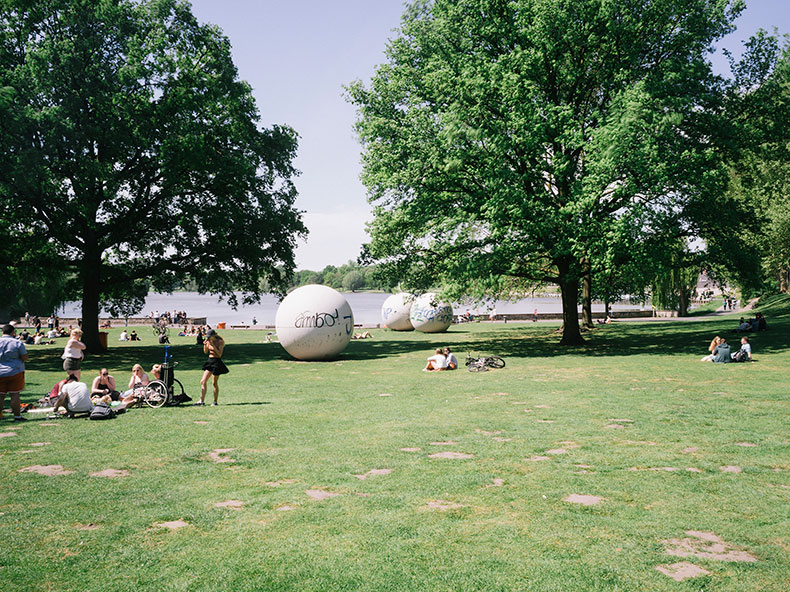
2. Giant Pool Balls (1977), Claes Oldenburg
Lake Aasee, Münster
Famous for his oversize replicas of food and domestic objects, Claes Oldenburg was a master of the public artwork. For the first edition of the decennial ‘Skulptur Projekte’ exhibition in Münster in 1977, the artist and his wife, Coosje van Bruggen, made a series of giant concrete pool balls that turn the park into a huge billiard table. They also refer to the city’s military history – from the cannonball embedded in Münster’s ancient wall, to the bombardment of the Second World War. The sculpture is still in situ at Lake Aasee today. Click here to find out more.
The Garden (2021), Anthea Hamilton. Studio Voltaire, London. Photo: FRENCH; courtesy the artist
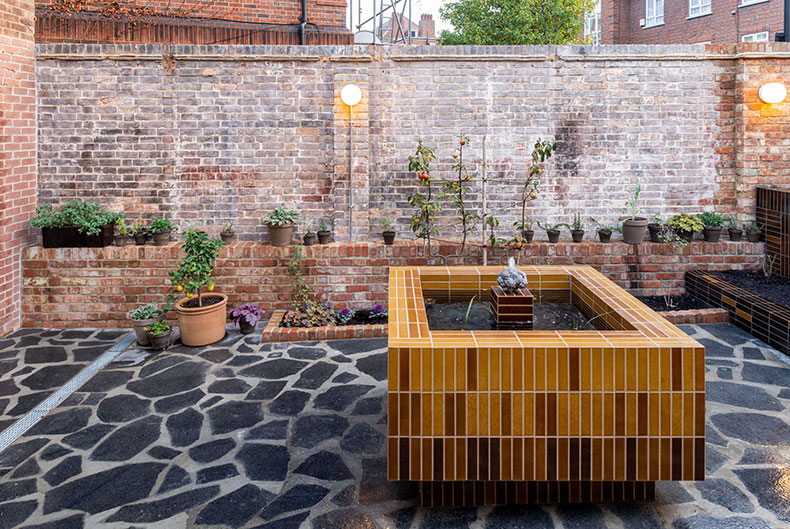
3. The Garden (2021), Anthea Hamilton
Studio Voltaire, London
With the looming ecological crisis occupying more and more column inches and gallery space, gardens have become the public artwork of the moment. Following in the tradition of Derek Jarman’s garden at Prospect Cottage, Anthea Hamilton has created a miniature oasis in Clapham for Studio Voltaire. The Garden is inspired by the ‘vernacular gardens of South London’ and features a wrought iron gate by Nicholas Byrne. Click here to find out more.
House to watch the sunset (2018), Not Vital. Tarasp Castle, Engadine Vallery
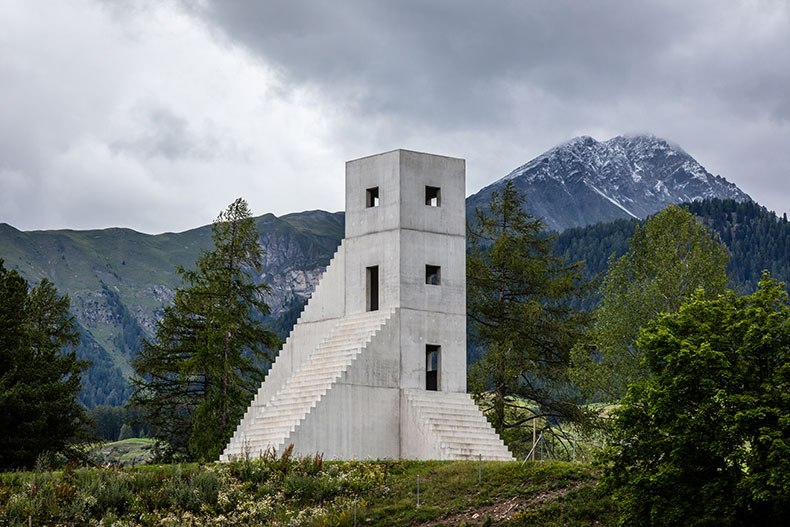
4. House to watch the sunset (2018), Not Vital
Tarasp Castle, Engadine Vallery
This elegant structure was designed by the Swiss artist Not Vital to sit at the foot of Tarasp Castle in the idyllic Alpine setting of the Engadine Valley, as part of an ongoing series that will span seven continents. The House to watch the sunset has three floors, each with its own staircase, though this iteration in Switzerland sadly cannot be climbed for healthy and safety reasons. In this case, the building has become a sculpture that can only be viewed from below. Click here to find out more.
Download now
![]() ‘Four things to see this week’ is sponsored by Bloomberg Connects, the free arts and culture app. Bloomberg Connects lets you access museums, galleries and cultural spaces around the world on demand. Download the app here to access digital guides and explore a variety of content or scan the QR code.
‘Four things to see this week’ is sponsored by Bloomberg Connects, the free arts and culture app. Bloomberg Connects lets you access museums, galleries and cultural spaces around the world on demand. Download the app here to access digital guides and explore a variety of content or scan the QR code.

